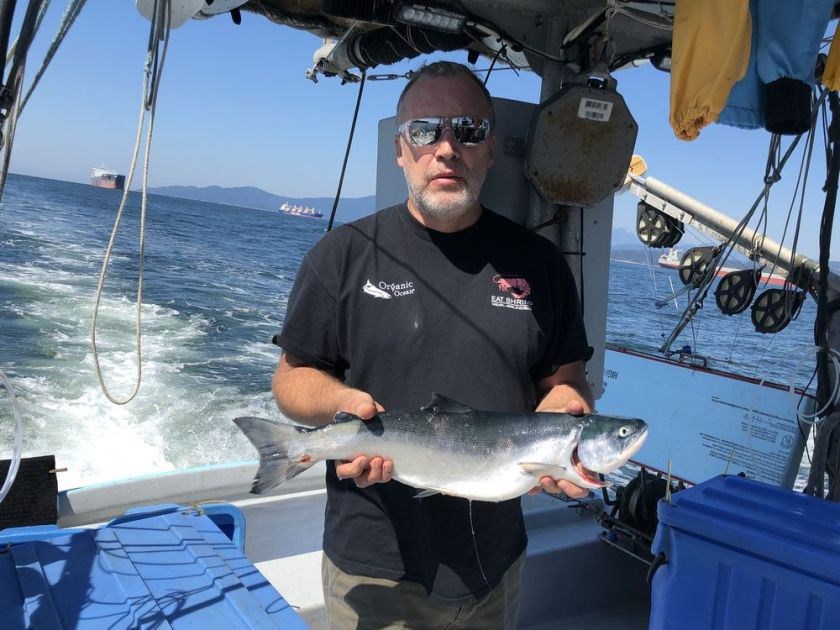Sockeye salmon entering the Fraser River this week will be aided by cooling water temperatures, which should decrease mortality and help them reach their spawning grounds up river in better condition.
"This is very good news as temperatures were a little bit high for a while," said Jennifer Nener, director of salmon management for the Pacific Region of Fisheries and Oceans Canada (DFO).
The river has been holding at about 18C recently, but DFO's Environmental Watch program projects it to drop to 17.2C in the coming days. Temperatures of 19C and higher hit earlier this summer, putting additional physical stress on the fish as they complete their marathon migration.
"We didn't have the high water temperatures as long as we've seen in other years," she said. "So we are in better shape than we have been."
B.C.'s terrible fire season appears to have been beneficial for the sockeye.
"The lower ambient temperature on the water has been a serendipitous result of smoke from the forest fires," said commercial fisherman Dane Chauvel, chair of the B.C. Salmon Marketing Council. "Because it's hazy it just hasn't been as hot, so that is bad news for the forest, but good for the sockeye."
Commercial fishers are optimistic that the sockeye run will live up to early season predictions as late-season fish start to enter the river.
Sockeye migrating into the river this summer are the grandchildren of the record-breaking 2010 run that exceeded 28 million fish.
This year's run was estimated to hit 14 million after 1.5 million returned in 2017 and just 850,000 in 2016, the lowest return ever recorded. The run peaks every four years, the time it takes the fish to reach sexual maturity.
"Late-run sockeye abundances are very high in marine areas" and more than three million early-summer and summer sockeye have already migrated past Mission, according to the Pacific Salmon Commission.
"The fishing we've had up to this point has been pretty darn good," said Chauvel. "You have to make your money in these peak years. The years in between are subsistence, so it's these sockeye years that put you over the top."
Returns to other river systems -- such as the Skeena -- have been greater than forecast, even though the fish came through later than expected, said Chauvel, who is test fishing in the Fraser for the commission three days a week.
"That seems to be happening with increasing frequency," he said. "I've heard the same thing is happening in Alaska in Bristol Bay where the fish came in greater numbers than projected, but later."
Earlier in the season, Chauvel encountered sockeye in "unprecedented abundance" northwest of Haida Gwaii.
"Anecdotally, I've heard they are still intercepting sockeye there, which fuels the theory that a lot of (sockeye) are still migrating to the Fraser," he said.
Test fisheries have been quiet for the past few days, according to Nener, a lull between the early-summer and summer runs and the late-summer run, which may be as much as 50 per cent of the total number of returning spawners.
"We were really quite concerned about what would happen this year after low returns the past few years, but the fact that we've seen as many fish as we have is good news," she said. "Now we are in wait-and-see mode to see how things play out."
On Friday, the commission announced limited openings in the Johnstone Strait and the mouth of the Fraser River for commercial harvesting of Fraser River sockeye.
First Nations food, social and ceremonial sockeye fisheries are underway in marine areas and the Fraser River.
The Tsawwassen First Nation was also permitted to set gill nets for sockeye in the lower Fraser on Saturday as an economic opportunity fishery, while three U.S. treaty fisheries were extended.
Marine and in-river recreational fisheries for Fraser sockeye have been open since early August.


